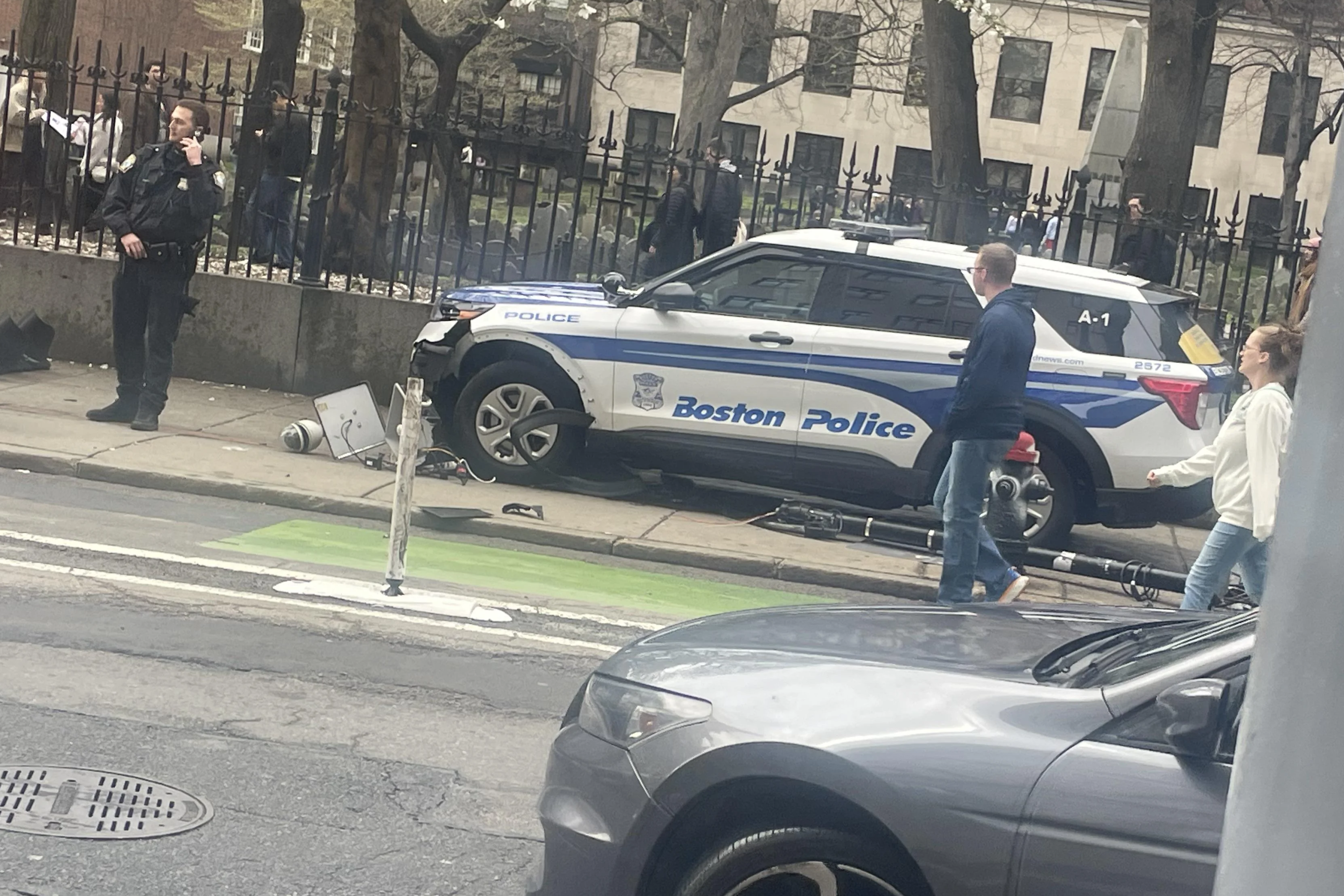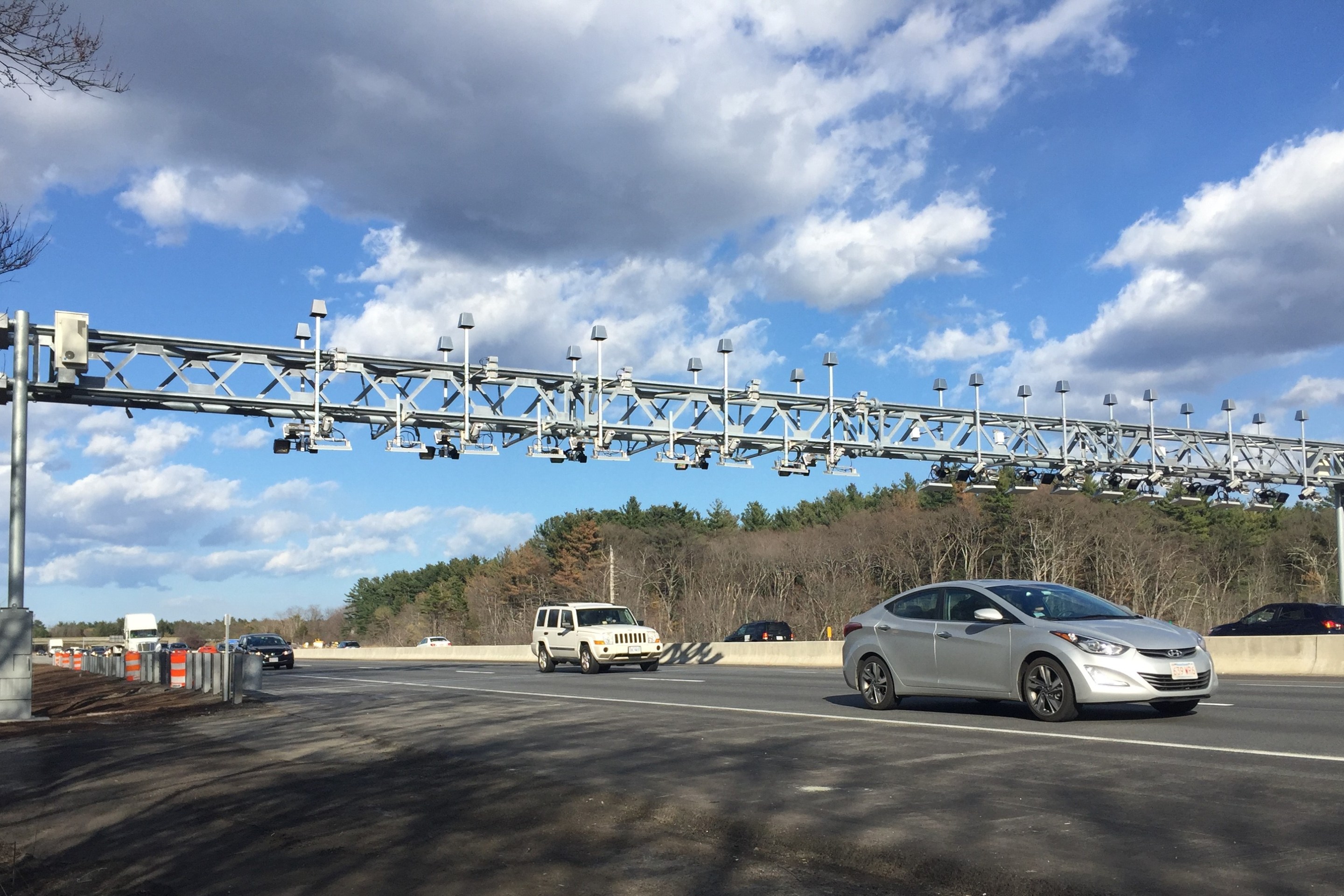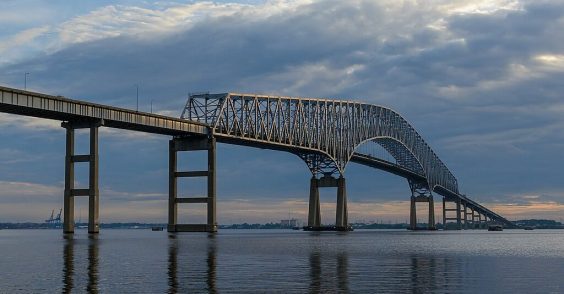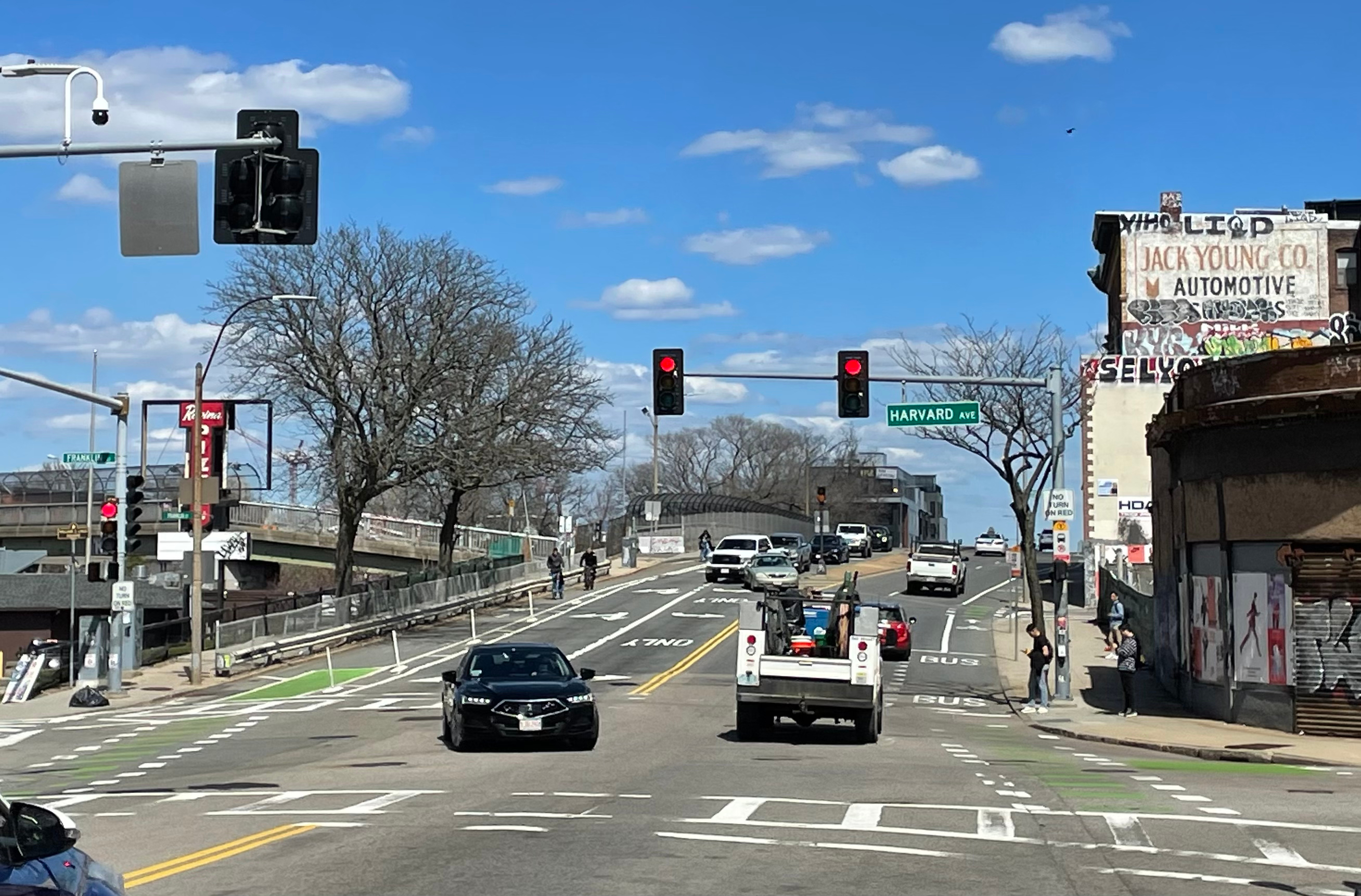Brahmin Bikelash: The Inside Story of Why There Are Still No Bike Lanes Through Beacon Hill
2:30 PM EDT on May 24, 2021
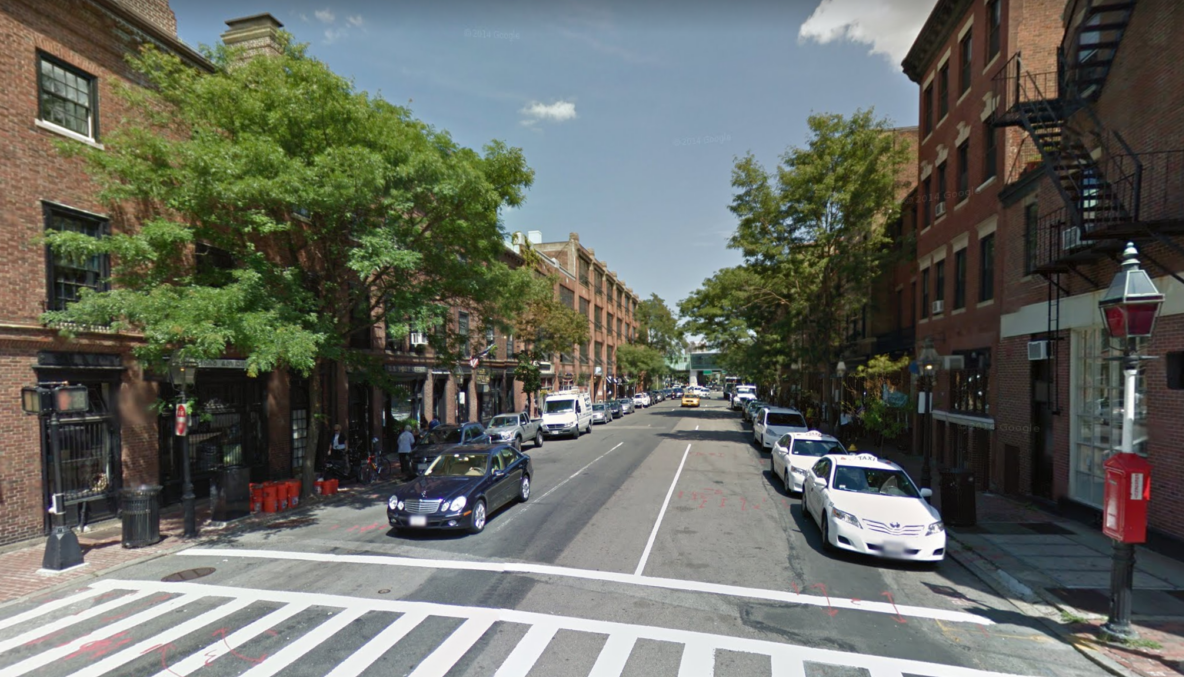
Almost one in three vehicles on Charles Street (pictured) is a bike during the morning rush hour, according to Boston’s 2019 bike count surveys.
Charles Street through Beacon Hill is one of the city's busiest bike routes: in the morning rush hours, when commuters pour into the city from the Longfellow Bridge, nearly one out of every three vehicles on Charles Street is a bicycle, according to official city traffic counts.
As the neighborhood's primary route to and from the busy Charles/MGH Red Line station, it's also a heavily-used walking route, with dozens of small businesses lining its sidewalks.
But the allocation of public space on Charles Street doesn't reflect who's actually using it. Its current layout features three lanes for motor vehicles, plus two curbside lanes for parked cars.
Pedestrians crowd relatively narrow sidewalks that are cluttered with parking meters, signs, and trash cans; with the sole exception of a Bluebikes dock, there's no dedicated space for bikes.
Even worse, there’s currently no legal way for bike riders to enter Beacon Hill from the south: most of the neighborhood’s streets are designated for one-way traffic, with “do not enter” signs facing Boston Common and the Public Garden.
“You can’t bike into Beacon Hill from downtown at all: Charles is one-way toward the garden, Brimmer is one-way toward the garden, River is one-way toward the garden,” says Steven Schmitt, a Beacon Hill resident who lives in a car-free household.
“We usually just take our chances riding the wrong way on Brimmer” to get back home, Schmitt says.
Schmitt has lots of company. Here’s longtime Beacon Hill resident Joan Doucette testifying in favor of a Charles Street bike lane in a May 2018 Boston City Council budget hearing:
“For 40 to 50 years, I have gone the wrong way on Charles Street,” Doucette told city councilors. “It’s very difficult to try and get around on Beacon Hill… I’m 80 years old and I hope it’s not going to take 4 to 10 years to get this damn bike lane.”
There's little debate over the fact that Charles Street does not need to have five lanes for cars. Bike transportation advocates have long been eager to reconfigure the street to provide a dedicated, two-way bikeway between the Common and Charles Circle.
That goal is also enshrined in official plans at Boston’s City Hall. Charles Street was identified as a priority for better bike facilities in the city's GoBoston 2030 plan. And in early 2020, when the city was beginning its outreach to plan the new "Connect Downtown" network of protected bike lanes, Charles Street was on the map as a key link to the Longfellow Bridge.
But while parts of Columbus Avenue, Tremont, Boylston, and the section of Charles Street south of Beacon Hill all got significant upgrades for bike and foot traffic last summer – on a trial basis at first, and later with more permanent materials – Beacon Hill’s main street has remained stuck in its pre-pandemic, car-choked configuration.
To find out why, StreetsblogMASS filed a public records request earlier this year with Boston City Hall for emails related to Charles Street and the Connect Downtown project.
Those emails reveal that city staff and a number of neighborhood residents were eager to improve safety for pedestrians and bikes on Charles Street in the midst of the pandemic.
But intense disagreements over the details from a handful of neighborhood residents and business owners blocked anything from changing.
‘Together on Charles Street’
On May 11, 2020 – a time when cities in the region were just beginning to consider how to use streets to create space for safe social distancing – Ben Starr, a realtor and the Chair of Traffic and Parking Committee for the Beacon Hill Civic Association (BHCA), emailed City Hall to ask about "how we create space for our restaurants" on Charles Street.
Several other BHCA board members replied to Starr’s message thread to chime in with their support, and in a May 12 reply to the same thread, Starr asked city staff to "keep us in mind as a guinea pig for any pilot programs."
The next day (May 13), Ali Ringenburg, a Charles Street gallery owner who serves on the board of both the BHCA and the Beacon Hill Business Association (BHBA), emailed Boston Transportation Department Director of Planning Vineet Gupta with a link to a May 12 StreetsblogMASS story about the city's new "healthy streets" initiative.
"The words 'expedited bike projects' make me nervous, especially in relation to Charles Street," wrote Ringenburg.
In another email message, Ringenburg pushed back against Starr’s request for a pilot program on Charles Street, and specifically objected to any plans that might create a bike lane:
"Keep us in mind for a pilot project. Just not a pilot project that puts bike lanes on Charles Street right now........ : )
Any pilot project that would help the restaurants and business, yes. Outside seating, product outside for boutiques, etc, etc, etc.
We are going to especially need a majority of parking right now. For people to run in and out of businesses, quickly, safely.
For suburbanites to come in and feel safe."
On June 9, BHCA board member Joshua Leffler emailed City Councilor Kenzie Bok and State Representative Jay Livingstone to propose a new plan for Charles Street that the Civic and Business Associations had developed among themselves:
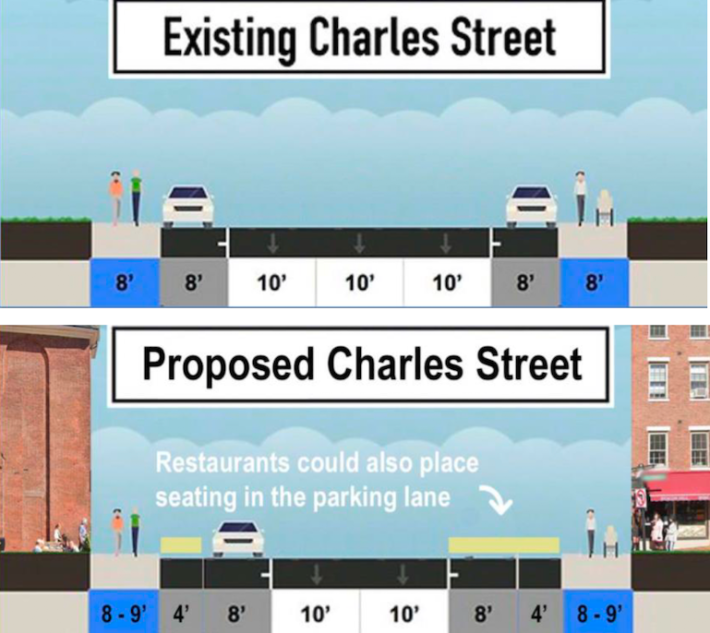
The boards of both the Civic and the Business Association unanimously endorsed this proposal, which they named "Together On Charles Street."
The concept would have eliminated one travel lane from the middle of the street to provide an additional 4 feet of walking space along each curb. But the "Together On Charles" plan would not have provided any dedicated space for a bike lane, and the two neighborhood groups stressed that the changes should be temporary, as a response to the pandemic.
Officials from the Boston Transportation Department (BTD) discussed the proposal in a June 10 phone call with Civic Association members. The next day, BTD Director of Planning Vineet Gupta emailed his colleagues to debrief them on the meeting.
“I think that while it may be important to accommodate the restaurants for the short term, we should be upfront in our messaging that installing a bike lane is equally necessary… Personally I think the Connect Downtown project does not work without the Charles Street link,” wrote Gupta.
“I agree,” wrote BTD Interim Commissioner Gregory Rooney in a reply a few minutes later.
“Agreed, as well,” replied Chris Osgood, then the city’s Chief of Streets (Osgood now serves as the Chief of Staff for Mayor Kim Janey).
There were other issues with the "Together On Charles" proposal. In a follow-up exchange with StreetsblogMASS this spring, BTD officials explained that the four-foot-wide sidewalk buffers would not meet ADA accessibility requirements, and would also not be wide enough for regular street cleaning.
Instead, BTD officials began to discuss a compromise plan for Charles Street, based on the neighborhood's idea of eliminating one motor vehicle lane from the middle of the street.
The BTD’s concept would have effectively shifted the "Together On Charles" proposal over to one side of the street, consolidating the additional space for walking and biking in a single 9- to 10-foot-wide corridor of flexible space on the west side of the street:
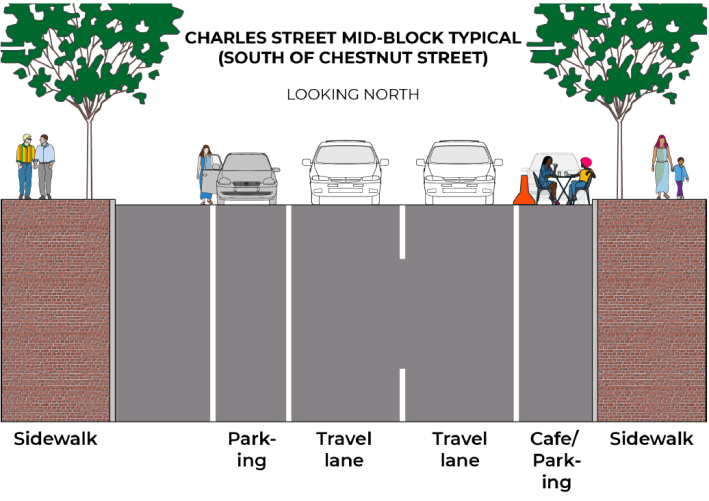
In keeping with the city’s mid-pandemic practice of testing new street layouts with temporary materials, city officials saw the temporary reconfiguration as an opportunity to test a street layout that could eventually accommodate the long-planned Charles Street bikeway.
“We can come back with bike markings later; the design doesn't preclude it,” wrote BTD Active Transportation Director Stephanie Seskin in a June 23 message to her colleagues.
City officials then scheduled a July 8 meeting with members of the Civic Association, Councilor Bok, and Rep. Livingstone to discuss the city's proposal.
There are no official records of what happened at that meeting, but the next day, on July 9, Ringenburg emailed city officials to inform them that “the Beacon Hill Business Association (BHBA) voted unanimously to withdraw our support of ‘Together on Charles Street.’”
“The BHBA does not support the alternate proposal offered by BTD yesterday, specifically the slow multimodal transportation lane (or possibly pedestrian only lane) on the flat side (even side) of Charles Street,” continued Ringenburg.
On July 14, Joshua Leffler wrote a similar email on behalf of the Civic Association.
“We had hoped to achieve a meaningful, temporary solution to support small and local businesses and pedestrians as they grapple with the multifaceted challenges posed by COVID-19," wrote Leffler. "Unfortunately, the plan proposed by the city fails to accomplish these modest goals and puts a fundamental public process at risk.”
A note about that public process: in late 2019 and early 2020, planners working on the City of Boston’s Connect Downtown project hosted four neighborhood walks, including one exclusively focused on Charles Street, plus dozens of drop-in office hours events at local libraries, and an open house (two others were scheduled, but were later canceled as pandemic lockdowns took effect). The city also published an online survey, and delivered direct mail flyers about the project to 20,000 downtown residents.
The BHCA’s “Together On Charles” proposal, by contrast, wasn’t vetted or discussed in any public meetings outside of the board meetings of the neighborhood's Business and Civic Associations.
‘We don’t believe that a public process should stymie change.’
In September 2020, Councilor Kenzie Bok followed up with BTD staff one last time.
“Just flagging for you that (Chair of the BHCA’s Traffic and Parking Committee) Ben Starr feels that the appropriate community process has been curtailed re: making the bike lanes permanent; he and I have gone many rounds on this at this point,” wrote Bok.
In April, StreetsblogMASS spoke with the BHCA’s Charles Street Committee – Ben Starr, Ali Ringenburg, and Josh Leffler – to ask why their "Together on Charles" proposal earned their organizations’ unanimous support, while the city’s compromise plan, which was informed by years of planning and outreach in dozens of community meetings, was unanimously rejected.
Starr bristled at the comparison of the two proposals.
“The two plans have nothing in common,” Starr insisted. "To call it a compromise would be misleading."
“What we proposed was an emergency pandemic plan to help restaurants and pedestrians on our narrow sidewalks… It was a temporary solution to save our businesses,” continued Starr. “The city saw an opportunity to sneak in their own plan to put in bike lanes under the cover of the pandemic. We are not against bike lanes, but we took their response as a rejection of our proposed plan. They rejected it.”
While the three Civic Association members remain sensitive about what happened (and didn’t happen) last summer, they insist they’re open to further discussions about how to better accommodate more bike and pedestrian traffic on their neighborhood’s main street.
“We don’t believe that a public process should stymie change,” insists Starr. “But we think that an iterative process with lots of voices can lead to a better outcome… Bikes and pedestrians are better and healthier for the environment, and we’re on board with that. If we get a real post-pandemic proposal (from the city), we can all come together and talk about what’s best.”
“What we were trying to do during a pandemic is very different from future proposals that might come from the city,” added Ringenburg. “We’re a community and we want to have a community conversation, that’s really important.”
For its part, City Hall seems to have moved on, and is now focusing its attention on street safety projects for other neighborhoods.
BTD is working on concepts for a dedicated, safe bikeway on Cambridge Street, which provides an alternative route between the Longfellow Bridge and downtown Boston. That's a busier street, though, and an actual project there is likely several years away.
The city is also working on concepts to improve the new downtown bike lanes around the Common and Public Garden with more permanent materials.
But a BTD press official stressed that “there will be no projects on Charles Street (or elsewhere) that are not publicly announced and communicated directly from the City.”
Stay in touch
Sign up for our free newsletter
